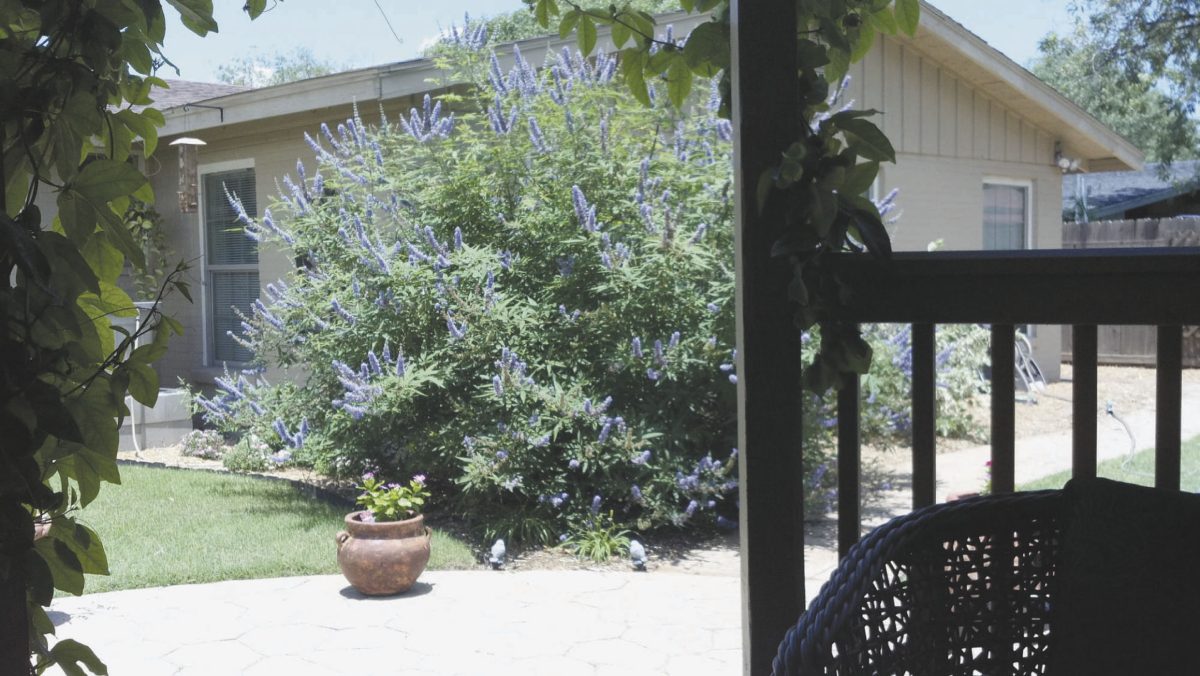BY LORI MURRAY
The Texas Superstar program was started in 1989 and has been a smashing success for gardeners looking for successful landscape plants. One of the successes horticulturists at Texas A&M have achieved is taking well-known plants and making them easier to grow and more desirable in their appearance.
A great example of this is the Vitex, often referred to as the Texas Lilac. Also known as the Chaste Tree, a name derived from the belief that the plant would suppress libido in women, this plant can be either a deciduous shrub or a small tree that will grow 10-15 feet tall and up to 15 feet wide. It is thought to be a native of China or India and has been cultivated in North America for over 300 years with a reference to the Lilac Chaste tree as early as 1670. It grows best in full sun (at least 6 hours of sun a day) and in a location that drains well.
The reason these beauties haven’t been planted in every yard for years is that the old vitex had small spikes of flowers that were pale lilac, mauve, off-white, or light pink. They were small and unimpressive.
Horticulturists have now identified and tested improved varieties such as “Montrose Purple,” Le Compte,” and “Shoal Creek,” which have flower spikes as long as 8 to 12 inches, are fragrant, and provide long-lasting cut flowers.
These Superstars are marketed under the name of Texas Lilac Vitex. The vitex blooms heavily in the early summer and then sporadically on into the fall. But, once the bloom spikes have provided several weeks of color, small round pod-like seeds are produced.
These seeds prevent additional bloom spikes and may even, in some regions, produce a mutant seedling population that will not be as glamorous as the parent plants. The answer to this problem is to deadhead the spent blooms and seeds, religiously. Since the tree is a fast grower, this is a continuous job because the pods must be removed after EVERY bloom cycle. Still, it’s worth the effort to see such a show of glorious flowers.
Also, horticulturists recommend cutting the shrub back to several inches every winter. (If the plant has gotten very large you can use a small chain saw to cut it back and use hedge shears to deadhead it during the growing season.)
Vitex is tolerant of both alkaline and acidic soils, is heat tolerant and disease resistant. If you transplant it, do so in the fall because it establishes more easily in cooler weather. Fertilize at planting time and each spring with either a layer of compost or a time-release fertilizer.
Once established, it requires little water so it would work well in xeriscapes. In earlier times enterprising homemakers would wrap the seeds and crushed leaves in net to make fresh-smelling sachets for closets and drawers. An added benefit is that vitex attracts butterflies and hummingbirds. It is even deer-resistant, and bucks will brush their antlers on its branches if the plant is allowed to grow large.
SOURCES:
aggiehorticulture.tamu.edu/cemap/vitex/index.html
texassuperstar.com/plants/vitex/index.html
nola.com/homegarden/index.ssf/2011/05/lively_vitex






